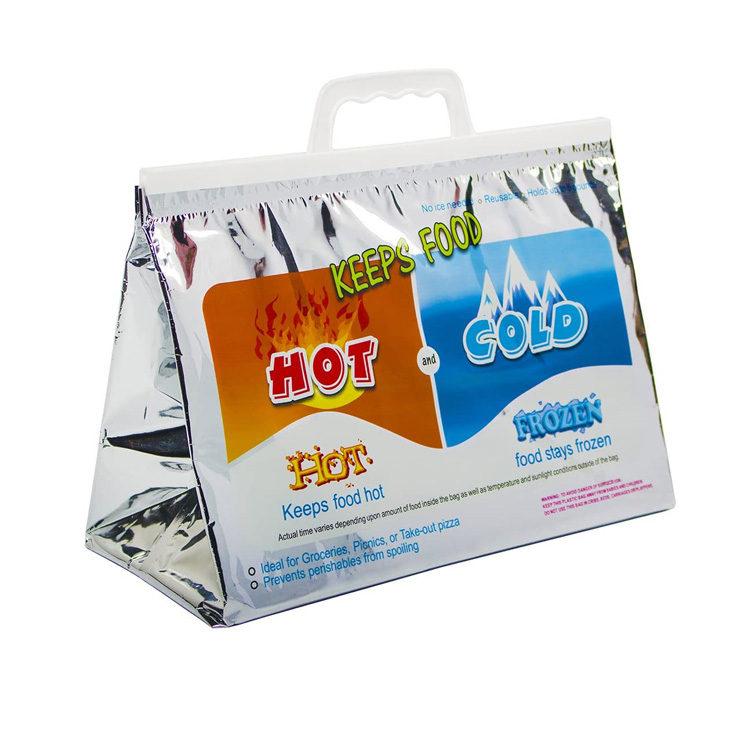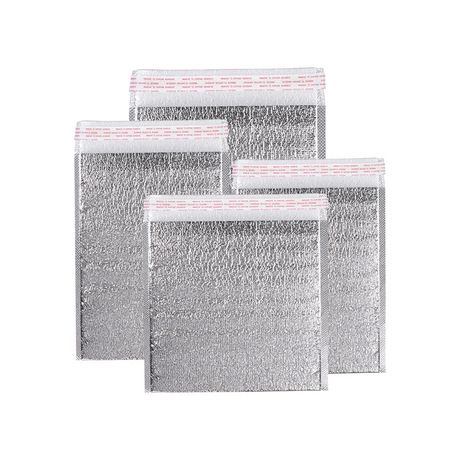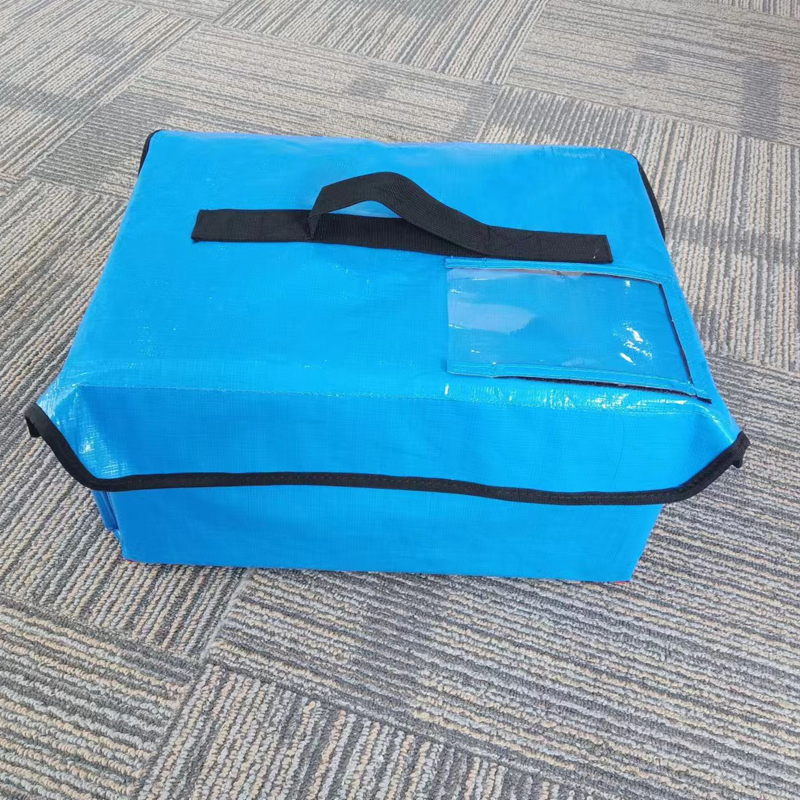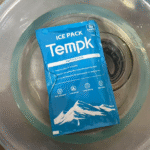Do Dry Ice Packs Work? A Guide to Dry Ice Effectiveness in Cold Chain
Dry ice packs are often used in cold chain logistics, but do they really work? In short, yes. Dry ice packs are highly effective for maintaining low temperatures during shipping, especially for frozen goods and temperature-sensitive items. This article will dive into how dry ice packs work, their benefits, and how you can best use them in your cold chain logistics operations.
-
How dry ice packs work and their unique properties
-
Key advantages of using dry ice in cold chain logistics
-
When to use dry ice versus regular ice packs
-
Potential challenges and safety concerns with dry ice
-
Best practices for using dry ice in shipping
How Do Dry Ice Packs Work?
Dry ice packs don’t melt, but rather they sublimate directly from a solid to a gas. This transition occurs at a very low temperature, -78.5°C (-109.3°F), which makes dry ice incredibly effective for keeping products frozen during shipping. When a dry ice pack sublimates, it releases carbon dioxide gas, which doesn’t leave any liquid residue, making it ideal for products sensitive to moisture.
Dry ice is widely used in the cold chain industry, where maintaining a specific temperature is essential for preserving the quality of products such as pharmaceuticals, vaccines, and perishable foods.
Dry Ice Sublimation Process
-
Solid to Gas: Dry ice sublimates, which means it turns directly from a solid into carbon dioxide gas, without turning into a liquid.
-
No Water Residue: This process avoids any water or condensation, unlike regular ice, which can melt into water.
-
Extreme Cold: Dry ice maintains temperatures far lower than regular ice, making it the preferred choice for long-distance shipping of frozen goods.
Why Are Dry Ice Packs Effective for Cold Chain Logistics?
Dry ice packs work because of their ability to maintain a low, consistent temperature for an extended period. This makes them especially useful for transporting perishable items, pharmaceuticals, and other sensitive goods that require ultra-low temperatures.
Dry ice is essential for the transportation of frozen foods, where traditional ice packs may not be cold enough to keep items frozen throughout long shipping durations. The key to dry ice’s effectiveness is its sublimation process, which allows it to release gas and keep the contents cooler for a longer time.
Advantages of Dry Ice Packs
-
Longer Cooling Duration: Dry ice packs maintain low temperatures for up to 48 hours or more, depending on insulation and the amount of dry ice used.
-
No Meltwater: Unlike regular ice packs, dry ice doesn’t melt into water, which is critical for avoiding damage to water-sensitive items.
-
Ultra-Low Temperatures: Dry ice can maintain freezing temperatures that regular ice simply cannot, making it ideal for frozen food, vaccines, and biotech shipments.
When Should You Use Dry Ice vs Regular Ice Packs?
While dry ice packs are great for extremely low temperatures, they might not always be the best choice depending on your shipment’s needs.
-
Dry Ice: Use dry ice for shipments that need to remain below freezing for an extended period (e.g., frozen food, medications, biological materials).
-
Regular Ice: Regular ice packs work better for items that need to be kept cool but not frozen, or for shorter transport durations.
Comparison of Dry Ice and Regular Ice for Shipping
| Factor | Dry Ice | Regular Ice | Best Use Case |
|---|---|---|---|
| Temperature | -78.5°C (-109.3°F) | 0°C (32°F) | Dry ice is essential for keeping products frozen |
| Duration | Up to 48 hours or more | 6-12 hours | Dry ice for longer trips, ice for short trips |
| Moisture | No liquid residue | Leaves water | Dry ice is ideal for moisture-sensitive goods |
Challenges with Dry Ice and Safety Considerations
While dry ice is effective, it does come with some challenges and safety concerns:
-
Sublimation Rate: Dry ice sublimates quickly, so you may need to replenish it during long shipments to maintain cold storage.
-
Handling: Dry ice is extremely cold and can cause frostbite if touched directly without proper gloves.
-
Ventilation: As dry ice sublimates, it releases carbon dioxide gas, which can displace oxygen in an enclosed space, posing suffocation risks in poorly ventilated areas.
Safety Tips for Handling Dry Ice
-
Use Insulated Containers: Store dry ice in well-insulated containers to slow down sublimation and prevent gas leakage.
-
Wear Protective Gloves: Always use thermal gloves when handling dry ice to prevent injury.
-
Proper Ventilation: Always use dry ice in areas with good ventilation to prevent CO₂ buildup.
Real-Life Example: A pharmaceutical company used dry ice for shipping vaccines across a 72-hour journey. By carefully packing the dry ice with appropriate insulation, they successfully kept the vaccines frozen without any loss of effectiveness due to temperature fluctuations.
2025 Trends in Dry Ice Usage for Cold Chain Logistics
In 2025, the use of dry ice in cold chain logistics is expected to continue its growth, driven by the demand for temperature-sensitive products. Innovations in smart packaging and eco-friendly solutions are making dry ice even more efficient and environmentally sustainable.
Recent Developments
-
Sustainable Packaging: Companies are exploring biodegradable materials to package dry ice, reducing environmental impact.
-
Smart Monitoring: New technologies allow for real-time temperature tracking during shipping, ensuring the stability of goods and reducing risks.
Market Insight: The demand for dry ice is expected to grow by 20% in the next 5 years, primarily driven by pharmaceutical companies and perishable food exporters looking for reliable temperature control during long-distance shipments.
Frequently Asked Questions {#faq}
Q: How long does dry ice last in shipping?
Dry ice can last up to 48 hours depending on factors like the amount used, the insulation, and the shipping conditions. For longer trips, it may need to be replenished.
Q: Can I use dry ice for short shipments?
Yes, dry ice is effective for short shipments that require subzero temperatures. It is ideal for frozen food or biotech products that need to remain below freezing for several hours.
Q: Is dry ice safe for the environment?
While dry ice is made from carbon dioxide, it is safe when handled correctly. However, proper ventilation is crucial to avoid CO₂ buildup in enclosed spaces.
Summary & Takeaways
Dry ice is a powerful cooling tool, effective in cold chain logistics for maintaining ultra-low temperatures. It sublimates instead of melting, offering unique advantages for shipping frozen goods, pharmaceuticals, and perishable items. While it provides superior performance, it requires proper handling and safety measures to ensure safe usage.
Next Steps
-
Evaluate your shipping needs: If your products need subzero temperatures for longer durations, dry ice is the right solution.
-
Ensure safety: Always handle dry ice with proper insulation and ventilation to prevent hazards.
-
Contact Tempk for customized cold chain solutions that use dry ice to maintain the integrity of your sensitive products.
About Tempk
Tempk provides innovative cold chain solutions, specializing in dry ice packs, gel packs, and other temperature-controlled packaging products. Our solutions help businesses safely transport frozen goods and temperature-sensitive items across long distances.
Need cold chain advice? Contact Tempk for expert assistance and tailored packaging solutions.
























